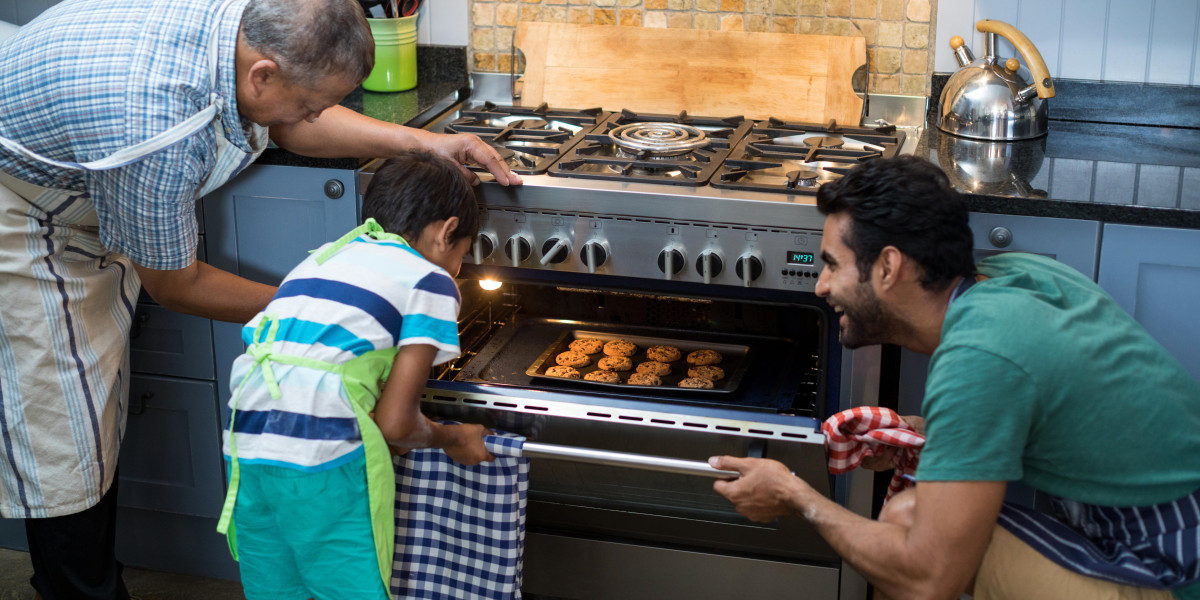Understanding In-Built Ovens: A Comprehensive Guide
In the world of modern kitchen design, built-in ovens have risen to prominence, mixing performance with aesthetics. Their smooth integration into cabinets offers a structured appearance, making them significantly preferred by house owners and cooking enthusiasts alike. This short article explores the various features, advantages, setup factors to consider, and popular kinds of built-in ovens, together with addressing some frequently asked questions.

What is an In-Built Oven?
An in-built oven, frequently described as a built-in oven, is a kitchen appliance designed to be set up within kitchen cabinetry, instead of as a freestanding system. This configuration permits a more advanced and orderly kitchen design while optimizing offered area. Built-in ovens been available in different sizes, styles, and functionalities to match different cooking needs and preferences.
Advantages of In-Built Ovens
The benefits of setting up an in-built oven extend beyond mere aesthetic appeals. Here are some essential benefits:
Space Efficiency: electric built in ovens uk-in ovens are developed to fit comfortably within kitchen cabinetry, making them ideal for compact spaces. This design leaves counter area complimentary for meal preparations.
Personalized Design: Homeowners can pick from a range of designs and finishes to complement their kitchen decoration, improving the overall look of the area.
Improved Functionality: Many SIA AMZDO102 Black Built-In Double Oven - Cookology COF600BK 60cm Black Electric Oven - Buy Now! - please click the following website, ovens are equipped with innovative cooking technology, providing features such as convection cooking, steam cooking, and self-cleaning functions, which improve cooking efficiency and flexibility.
Ergonomic Height: Installing an oven at eye level lowers the requirement to bend down, making it easier to inspect food and handle dishes without straining the back.
Improved Safety: Built-in ovens can incorporate safety features such as cool-to-the-touch surfaces and child locks, which can be particularly crucial in homes with children.
Kinds Of In-Built Ovens
Inbuilt ovens can be found in numerous types to deal with various culinary needs. Below is a contrast of common types:
| Type | Description | Pros | Cons |
|---|---|---|---|
| Single Oven | A standard oven that cooks from one space | Space-efficient, easier to utilize | Minimal cooking capacity |
| Double Oven | Two different oven compartments for varied cooking | More cooking space, versatility | Higher cost, uses up more area |
| Compact Oven | Smaller sized ovens ideal for small kitchen areas or as a second oven | Space-saving, versatile | Minimal capability |
| Steam Oven | Utilizes steam for cooking, maintaining wetness | Healthier cooking alternatives | Normally more pricey |
| Wall Oven | Built into the wall, offered in single or double configurations | Saves flooring space | Installation complexity |
Features to Consider When Choosing an In-Built Oven
When selecting an inbuilt oven, several features should be considered:
Size: Measure your kitchen area and kitchen cabinetry to ensure the oven fits properly. Common widths for built-in ovens range from 24 inches to 30 inches.
Cooking Methods: Determine the cooking methods you prefer-- conventional, convection, or steam. This decision will substantially affect your cooking design and the oven's abilities.
Energy Efficiency: Look for ovens with high energy effectiveness scores. These designs conserve cash on utility costs and are better for the environment.
Control Options: Evaluate the control interfaces. Some designs provide wise features enabling for remote cooking control and tracking through smartphone apps.
Security Features: Ensure the oven features essential security functions, especially if children will be present. Lock-out systems and cool outsides are important improvements.
Setup Considerations
Proper installation is important for the optimal efficiency of an inbuilt cooker oven. Here are some setup considerations:
- Ventilation: Ensure proper ventilation to eliminate smoke and odors. Seek advice from local structure codes concerning kitchen ventilation requirements.
- Electrical Requirements: Built-in ovens typically need a dedicated electrical circuit. Have a certified electrician evaluate affordability and security.
- Professional Installation: While DIY may be appealing, hiring an expert installer guarantees the oven is fitted firmly and safely.
FAQs About In-Built Ovens
What is the difference in between a built-in oven and a freestanding oven?
Built-in ovens are developed to be installed within cabinets, whereas freestanding ovens can stand alone and normally integrate oven and cooktop in a single device.
Can I install a built-in oven myself?
While DIY installation is possible, it is frequently suggested to work with a professional to guarantee safety and adherence to regional building regulations.
Are inbuilt ovens worth the financial investment?
Yes, in-built ovens generally offer enhanced looks, advanced performance, and efficient use of area compared to conventional freestanding models.
What upkeep do inbuilt ovens need?
Routine cleansing, checking seals, and ensuring correct ventilation are essential upkeep jobs. It's a good idea to follow the maker's guidelines for specific care standards.
How much does an in-built oven generally cost?
Costs can vary significantly based upon features, brand name, and type, however built-in ovens typically range from ₤ 700 to ₤ 3,000 or more.
Built-in ovens present a mix of beauty and functionality, making them an outstanding option for both brand-new constructions and kitchen remodels. Comprehending the types, functions, and setup factors to consider can empower house owners to make educated choices about which built-in oven best matches their requirements. As culinary patterns progress and kitchen style becomes more advanced, built-in ovens will continue to play a considerable role in contemporary kitchens, combining cooking with design and functionality.








